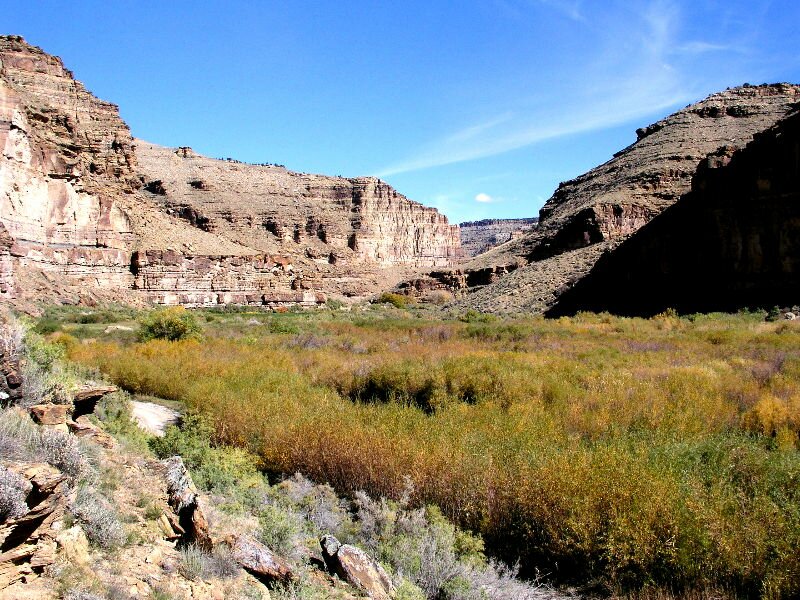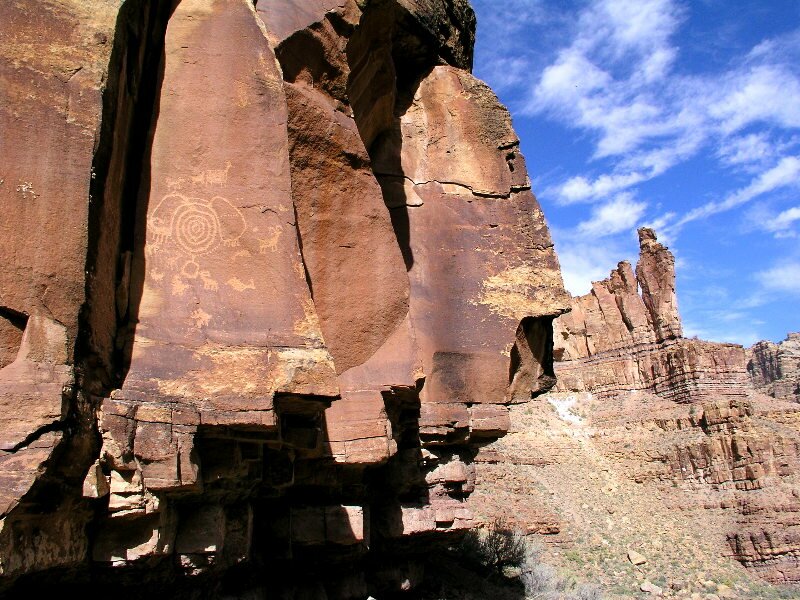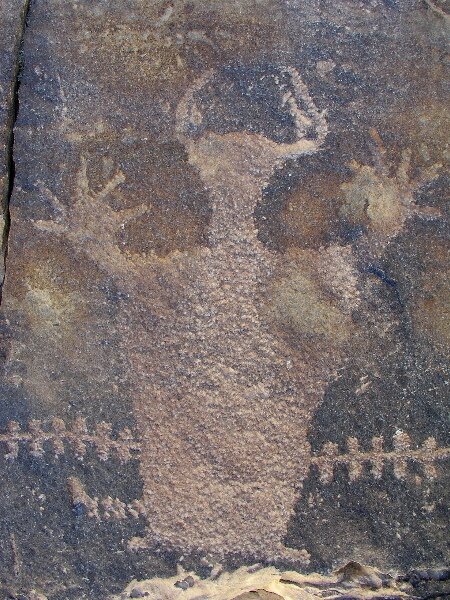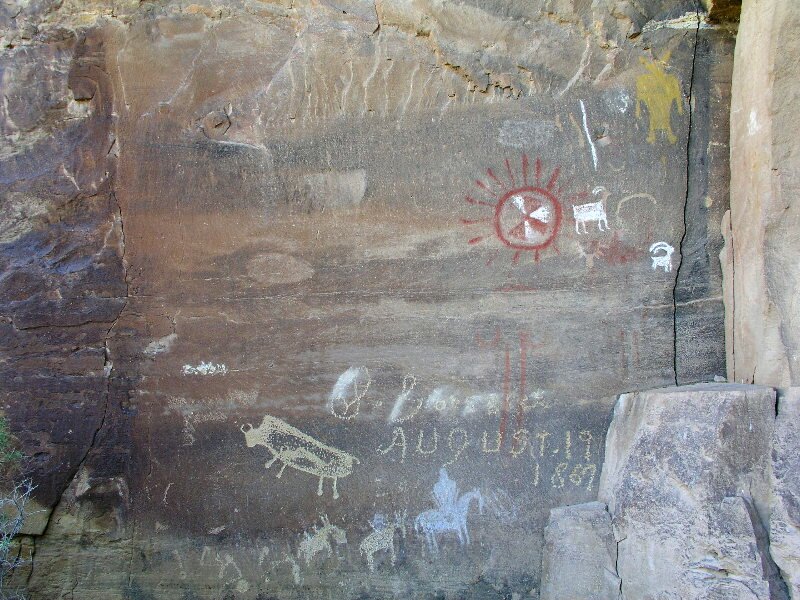|
The Nine Mile Canyon site hardly needs an introduction. It is one of the premier rock art sites in Utah and the rock art community has beaten a path to it for years. Today it is straining under the weight of exploratory ventures and natural gas drilling by energy companies. The tremendous increase in heavy truck traffic and the unknown impact of dust-suppressing road chemicals have rock art conservation organizations duly concerned.
There is convincing evidence that succeeding cultures used this area for habitation, hunting and farming. Migratory Archaic hunters and gatherers may have been the first, but others include the Anasazi, Fremont and Ute cultures. Most, but not all, of the rock art is attributable to the Fremont Culture.
Both petroglyphs and pictographs can be found in here, although the former far outnumber the latter. It has been estimated that over a thousand panels can be found in Nine Mile Canyon, with more than 10,000 images. However, explorations of side-canyons off Nine Mile proper are adding to this number. Rock art surfaces in Nine Mile are predominately sandstone. Rock art styles run the spectrum from naturalistic to cryptic, however the vast majority can be classified as representational—not a true depiction of an object, but a close approximation, enough so the figure is readily recognizable (e.g. human or animal-like figures). Abstract elements–shields, spirals, dot patterns, etc.–are not uncommon.
Several panels or individual elements have achieved iconic status because of their beauty or uniqueness, not least among these being the Great Hunt Panel, Bolo Man, and the many horned snakes. While I may have included some of these, there is a wealth of other images that I haven’t seen published in books—and it is these images that I have chosen to include here.
Text and photographs by Geron Marcom.
|
|

|

|
|
Eastward view of a section of Nine Mile Canyon (which is actually forty miles long) and runs west to east. The majority of of rock art in the main canyon occurs on the north side, facing south.
|
This is the panel that has been used as the “official” icon representing the canyon as a whole: the Great Hunt Panel. The road used to pass right under this panel, but has been realigned several hundred feet away to protect the panel from the vibration and dust of the many gas exploration vehicles plying the road.
|
|

|

|
|
This is called the Family Panel and is another of the notable sites in Nine Mile. The central “father-child-mother” anthropomorph figures may actually have nothing to do with a family.
|
In one of the side canyons is the “Echo Site.” In the background is Mummy Rock. The main element is the large concentric circle with “ears,” surrounded by bighorn sheep. Around the corner are many other elements.
|
|

|

|
|
This is one of my favorite single glyphs. Not only unusual, the long-necked sheep is elegant in its simplicity.
see a petroglyph replica of this image opens a new window
|
Fremont anthropomorphs abound in Nine Mile Canyon. Characteristically they have the trapezoid body shape, splayed fingers and ornate headdresses.
|

|

|
|
A Fremont Culture panel in the ubiquitous Northern San Rafael Style
|
The interior of Rasmussen Cave contains many pictograph representations, petroglyphs and bedrock metates. These white pictographs are painted along the back wall; a few sheep petroglyphs can be seen in the lower left.
|

|

|
|
The odd anthropomorphic figure on the left called “Bolo” or “Balloon Man” appears to be juggling or holding some kind of starburst. The three figures holding shields are similar to Anasazi motifs and the square bodied sheep is probably Fremont.
|
This location is named the “Sandhill Crane Site” because of the three bird glyphs. Outstanding features, besides the marsh birds, include the two large horned serpents filled in with cross-hatching. Each serpent is superimposed over other glyphs although it’s hard to tell which figures were done first.
|

|

|
|
Not far from the 'Great Hunt Panel' is the 'Pregnant Buffalo', an image of a large buffalo with a smaller buffalo inside. The panel also contains both Fremont and Ute pictographs, as well as some historic graffiti.
|
Another beautiful example of a Fremont Style panel containing many of the most prevalent motifs: trapezoidal anthropomorphs, dot patterns, bighorn and spirals, as well as other unique elements.
|
|
Much of the land in the Nine Mile Canyon is privately owned and trespassing is frowned upon. Good rock art etiquette dictates honoring the landowner’s wishes. This and the fact that many panels are impossibly high up—one wonders how in the world their creators ever got up there to make them—requires many photos be shot from a distance. I hope you’ll find these interesting
|